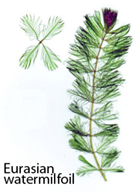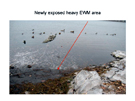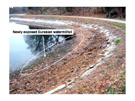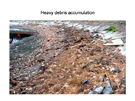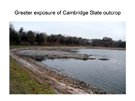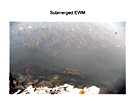FOR IMMEDIATE RELEASE
Ria Convery, Communications Director
(617) 788-1105, <ria.convery@mwra.state.ma.us>
MWRA LOWERS CHESTNUT HILL RESERVOIR LEVELS
TO COMBAT INVASIVE WEED
|
An invasive weed called Eurasian watermilfoil (Myriophyllum spicatum L.) has taken root along the perimeter of the Chestnut Hill Reservoir.
The weed beds, while abundant, are not expected to spread throughout the rest of the reservoir. Eurasian milfoil thrives in muddy sediments, which are found only along the reservoir’s shoreline. Other habitats within the reservoir basin do not support milfoil growth.
Though currently limited to the water’s edge, the Chestnut Hill Reservoir’s milfoil beds must be kept at bay. Extensive infestation can cause elevated water temperatures and depressed dissolved oxygen levels; floating mats of milfoil are drowning hazards to wildlife and pets.
Native to tropical climates, Eurasian watermilfoil cannot survive when its roots are exposed to freezing air for long periods of time. By lowering water levels, the milfoil can be dehydrated and, at the right time of the year, frozen to death.
This method of controlling aquatic weeds, called “draw-down/freeze-off,” curbs Eurasian milfoil naturally and without the use of pesticides. MWRA plans to perform a draw-down/freeze-off to the Chestnut Hill Reservoir every winter for three years. After that, every other year should suffice.
ABOUT THE CHESTNUT HILL RESEVOIR
The Chestnut Hill Reservoir, bordered by the cities of Boston and Newton, was built in 1870. It holds 500 million gallons of water and would only be activated during a water supply emergency.
|
Eurasian watermilfoil,
|
Area of heavy debris |
Area of heavy milfoil |
|
Greater exposure |
The Chestnut Hill Reservoir, |
Submerged bed of Eurasian watermilfoil |
###
Updated December 8, 2009
